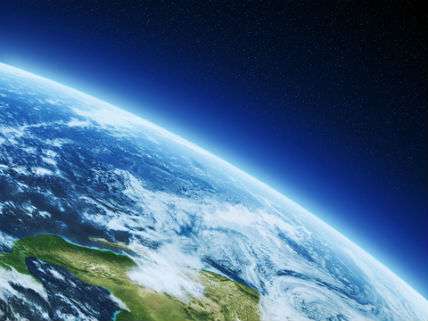Climate Intervention Finally Discussed in Latest National Global Change Research Plan Update
Way past time to experiment with geoengineering as an emergency backup plan to cool the planet

Most environmental activist groups are resolutely opposed to allowing experiments that aim to test and develop various geoengineering ideas as an emergency backup cooling plan for the earth. For example, the Friends of the Earth want a global moratorium on any such experiments. Why? Geoengineering conflicts with sustainable and just solutions to the climate crisis," declares FOE. "Real climate justice requires dealing with root causes of climate change, not launching risky, unproven and unjust schemes."
One of the more intriguing ideas is to reflect sunlight back into space as way to cool the planet. In one proposal the stratosphere is seeded with reflective sulfur dioxide particles. The eruption of the Mt. Pinatubo volcano that injected millions of tons of sulfur dioxide into the stratosphere in 1992 functioned as a natural experiment that lowered global average temperature by around 0.7 degree Celsius for several months. Another proposal is to have specially designed ships spray seawater into the air so that salt particles functioning as cloud nuclei can whiten, and thus make more reflective, low-level maritime clouds.
At the Marrakech United Nations climate change conference in November, Cambridge University researchers Hugh Hunt and Peter Wadhams expressed their frustration with environmentalist obstructionism with regard to geoengineering experiments to test the feasibility of cooling the climate. Neither is in favor of geoengineering as the first resort, but that humanity should have some idea if it would work should global average temperature rise faster and produce worse consequences than currently projected. They discussed one possible experiment in which maritime clould whitening might be tried at a relatively small scale at the edge of the Arctic sea ice to see if it could reverse the recent steep decline in Arctic summer sea ice.
Protests from Green activists in 2011 managed to derail the SPICE experiment (Stratospheric Particle Injection for Climate Enginieering) in which researchers would hoist a hose using balloons a kilometer into the air to spray water vapor. The goal was merely to see if such a pipeline would work. Amusingly, some activists have scheduled a Global March Against Geoengineering (and Chemtrails) for April 23 this year.
Cowed by activists and beholden to the misbegotten precautionary principle, the U.S. government has not sanctioned research on an emergency backup cooling system. That may change. As President Obama is departing, U.S. Global Change Research Program (USGCRP) has just issued it National Global Change Research Plan 2012–2021: A Triennial Update that opens the door a tiny crack to such research. The USGCRP is not endorsing experiments but does note:
While climate intervention cannot substitute for reducing greenhouse gas emissions and adapting to the changes in climate that occur, some types of deliberative climate intervention may someday be one of a portfolio of tools used in managing climate change. The need to understand the possibilities, limitations, and potential side effects of climate intervention becomes all the more apparent with the recognition that other countries or the private sector may decide to conduct intervention experiments independently from the U.S. Government.
An immediate next step for USGCRP is defining the scale and scope of observations and modeling capabilities necessary to detect the signal of any future field experiments above baseline conditions and natural variability, and to evaluate their consequences. Such research would also define the smallest scale of intervention experiments that would yield meaningful scientific understanding. USGCRP will use its scientific understanding of natural processes, such as natural carbon sequestration or dynamics of atmospheric particulates, to inform potential pathways for carbon removal and albedo modification. Approaches would include evaluating the capabilities of current models to represent any proposed climate intervention measure and to evaluate its implications over time, using natural events as intervention analogs (such as volcanic eruptions that inject large particulate loads into the atmosphere), and laboratory experiments.
One such small scale intervention experiment might include Arctic maritime cloud whitening to see if reduces sea ice melting in the summer. At the Marrakech climate conference, researcher Hugh Hunt analogized a future period of especially rapid warming to World War II noting that "the urgency of winning the war against Hitler was such that things were done, like the Normandy landing, without thinking too much whether people agreed. Sometimes the urgency is such that we need to do the research, and fast." Hunt added, "I'm not pro-geoengineering at all — I'm pro-research." Perhaps this new report indicates that the federal government will ignore anti-geoengineering activists and also now become pro-research. At the very least, the government should get out of the way of private groups like Intellectual Ventures that want to test geo-engineering technologies.


Show Comments (199)